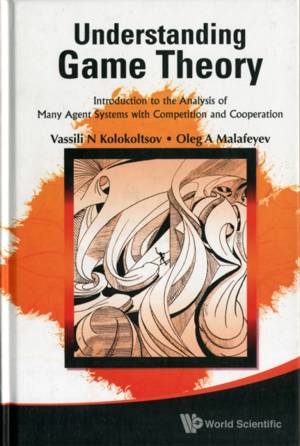
- Afhalen na 1 uur in een winkel met voorraad
- Gratis thuislevering in België vanaf € 30
- Ruim aanbod met 7 miljoen producten
- Afhalen na 1 uur in een winkel met voorraad
- Gratis thuislevering in België vanaf € 30
- Ruim aanbod met 7 miljoen producten
Zoeken
Understanding Game Theory: Introduction to the Analysis of Many Agent Systems with Competition and Cooperation
Vasily N Kolokoltsov, Oleg A Malafeyev
Hardcover | Engels
€ 132,95
+ 265 punten
Omschrijving
Steadily growing applications of game theory in modern science (including psychology, biology and economics) require sources to provide rapid access in both classical tools and recent developments to readers with diverse backgrounds. This book on game theory, its applications and mathematical methods, is written with this objective in mind.The book gives a concise but wide-ranging introduction to games including older (pre-game theory) party games and more recent topics like elections and evolutionary games and is generously spiced with excursions into philosophy, history, literature and politics. A distinguished feature is the clear separation of the text into two parts: elementary and advanced, which makes the book ideal for study at various levels.Part I displays basic ideas using no more than four arithmetic operations and requiring from the reader only some inclination to logical thinking. It can be used in a university degree course without any (or minimal) prerequisite in mathematics (say, in economics, business, systems biology), as well as for self-study by school teachers, social and natural scientists, businessmen or laymen.Part II is a rapid introduction to the mathematical methods of game theory, suitable for a mathematics degree course of various levels. It includes an advanced material not yet reflected in standard textbooks, providing links with the exciting modern developments in financial mathematics (rainbow option pricing), tropical mathematics, statistical physics (interacting particles) and discusses structural stability, multi-criteria differential games and turnpikes.To stimulate the mathematical and scientific imagination, graphics by a world-renowned mathematician and mathematics imaging artist, A T Fomenko, are used. The carefully selected works of this artist fit remarkably into the many ideas expressed in the book.
Specificaties
Betrokkenen
- Auteur(s):
- Uitgeverij:
Inhoud
- Aantal bladzijden:
- 300
- Taal:
- Engels
Eigenschappen
- Productcode (EAN):
- 9789814291712
- Verschijningsdatum:
- 31/03/2010
- Uitvoering:
- Hardcover
- Formaat:
- Genaaid
- Afmetingen:
- 152 mm x 229 mm
- Gewicht:
- 566 g

Alleen bij Standaard Boekhandel
+ 265 punten op je klantenkaart van Standaard Boekhandel
Beoordelingen
We publiceren alleen reviews die voldoen aan de voorwaarden voor reviews. Bekijk onze voorwaarden voor reviews.











